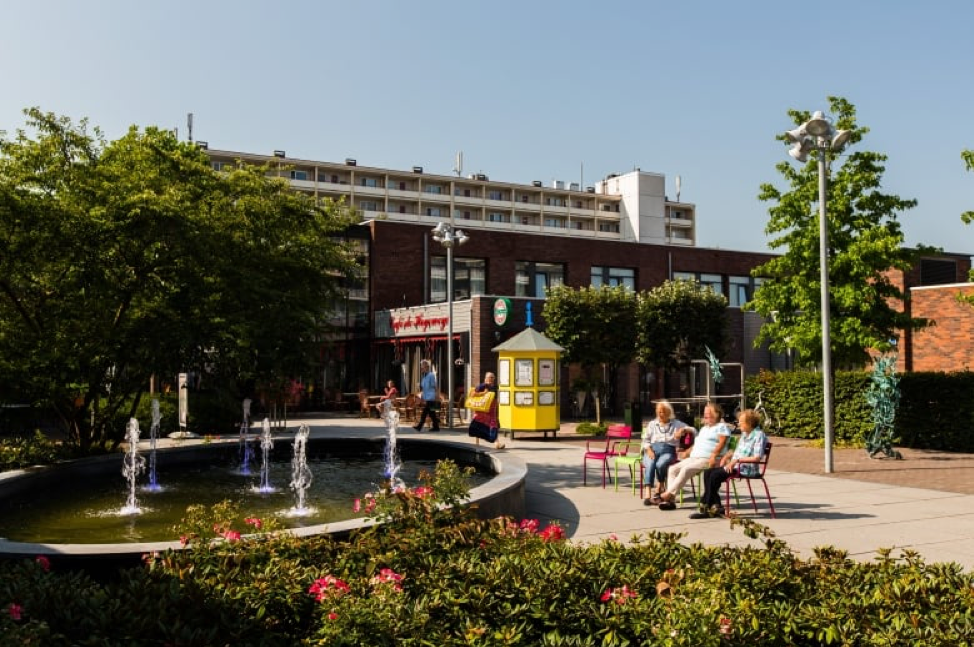The concept of dementia villages was first brought to life in 2009 in Hogeweyk, a Dutch town near Amsterdam.
It involves creating micro-neighbourhoods that mirror residents’ hometowns. These ‘villages’ are complete with a supermarket, café, cinema, post office, salon, public squares and gardens.
As opposed to traditional care homes where residents are placed into shared rooms of up to 50 people, individuals are placed in smaller houses of up to 13. Each person has access to their own room as well as a small private garden.
Then, the world is their oyster. Residents are allowed to move freely about the small village as normal, engaging in activities, daily errands, and socialising with others who live there.
All of this occurs while being carefully monitored by caregivers who will step in to help if needed. Medical doctors are also on-site around the clock in the event of emergencies.

Design details inside residents’ homes and the village itself have been carefully guided by certified research on dementia.
For example, contrast-coloured tiled floors can be confused for holes in the ground for those with the disease. As a result, all homes have floorings that are neutral and single-coloured.
Important items like handrails are brightly coloured so that they are easy to recognise. Cabinets are made with transparent material so that personal items can be seen from a distance more easily.
The height of bannisters on balconies has been risen to prevent falls and paths and hallways have been widened to allow better access for those using walkers. Meanwhile, all rooms have soft details to minimise distracting or startling sounds.
So far, these safely designed villages have been recreated in Canada, Ireland, Germany, France, and Denmark. While research is ongoing to determine the breadth of benefits of these villages, there are already some wonderful findings from the original Dutch location.

At least 50 percent of people who moved into the Hogeweyk village were on anti-psychotic medicines upon their arrival. After living in the village, this number dropped to 10 percent.
One major obstacle to making dementia villages the norm is, of course, cost. For a single patient, the costs range from around £5,300 a month. Government subsidies will be vital in making more humane care centres more widely available for those living with the disease.
With any care program for the elderly, the main goal should be to extend quality of life for as long as possible. Providing a safe space for individuals to fulfil their personal goals and hobbies to the best of their ability helps to achieve that.
De-institutionalising care homes in favour of community-centred living helps to preserve the dignity and identity of people as they age. Let’s hope we see more of these designs popularised by increasing funding in the future.
























